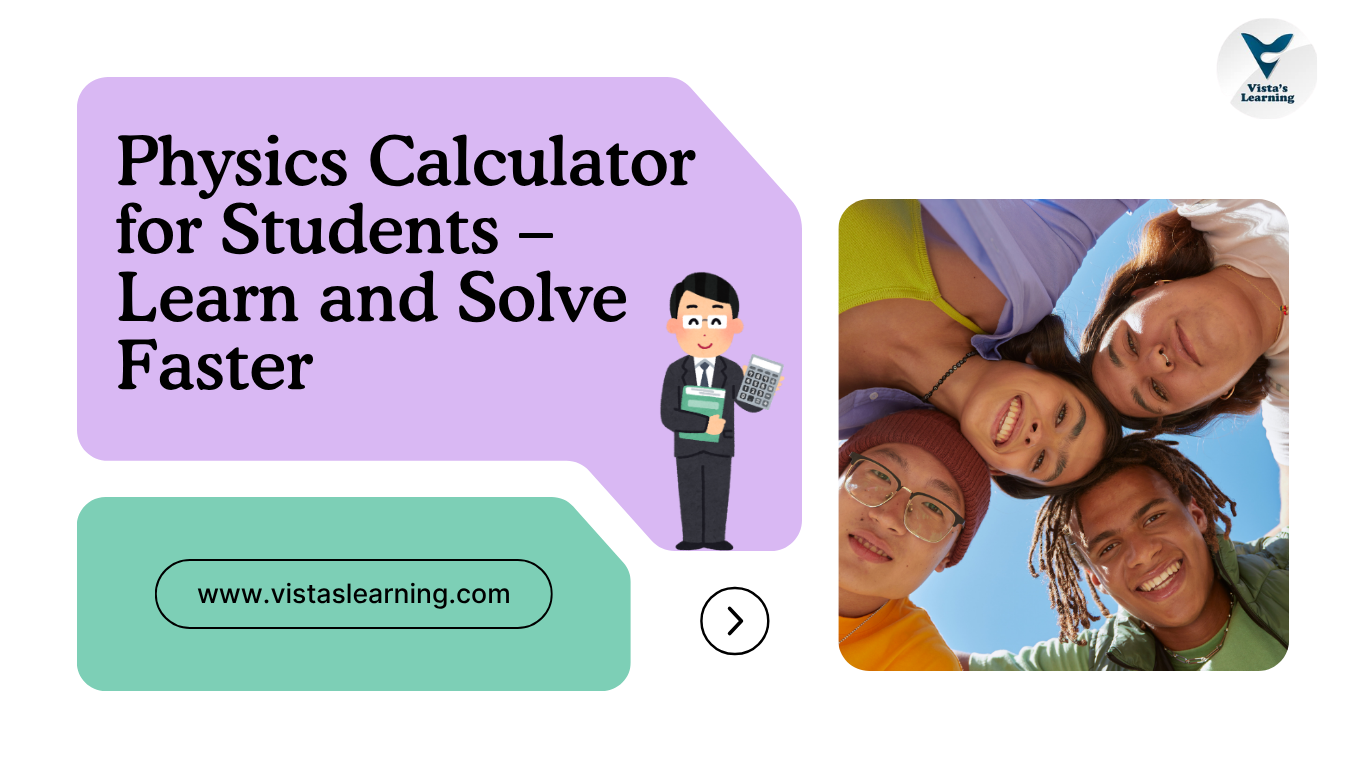The standards for students of all grades have grown a lot since technology became part of school life. The effects of modern technology can be clearly felt in fields like physics calculator that need a lot of math and formula work. Educational technology, also known as e-learning aids, includes tools like physics computers that help students understand what they are learning. Students are no longer have to do hard calculations by hand thanks to advanced calculators that let them enter numbers and get results. It has never been easier for high school and college students to solve equations, understand facts, and learn new ideas.
1. Uses of central force motion in geometry and physics
A physics tool will help students do their homework and review in ways that have never been done before. It can help with things like energy, motion, and electromagnetism. Students can focus on understanding real ideas if they don’t have to spend as much time dealing with math. The best results will come from the using these kinds of gadgets in a real classes, where students can work on problems while the teacher talks and use what they are learning right away. Technology has made it possible for both new and experienced physics students to enjoy learning without getting frustrated.
2. How do these tools help you learn?
A lot of students have trouble understanding the basic ideas of physics. A smart calculation help tool gets rid of problems by doing the math that needs to be done. It lets students see the outcomes, double-check their math, and even change some factors. Teachers often ask students to use these tools to check their answers in real time while they are working on hard problems. The instantaneous feedback process makes learning stronger and encourages learners to be resourceful and tough. Students can easily work on and practice problems with force, speed, and acceleration with these tools.
3. What live classes can do to help you use calculators better
A live class and a problem-solving tool together to make for a better learning setting. Teachers can help students figure out how to solve problems by showing them live, step-by-step how to do it. Students can then use their own devices to interact with the material. This lively and interesting method fills in persistent learning gaps and encourages students to ask questions. Teachers can now hold online practical lessons with the help of specific teaching aids on virtual platforms. This makes it easier to connect theory and practice.
This makes physics less scary for people who are learning it.
4.Things to think about when picking a physics calculator
When picking out a tool or app, a student might be interested in drawing, solving equations, and changing units. The more advanced ones show you all the steps, which helps when you’re studying on your own or in class. Also, they are easy to find because they are optimized for smartphones and have a simple design, so students can work at their own pace. All of these things work together to keep students from having too much work to do while also helping them remember important ideas.
5.Digital Tools vs. Traditional Methods for Solving Physics Problems
The usual ways of answering physics problems are very good, but they can get too hard to understand and use. Because digital aids are so confusing, the focus changes from using formulas and figuring out what they mean to repeating the right formulas. During lessons, teachers often show how useful technology can be by doing complex calculations using both simple hand-held tools and computers. Using both methods together helps students develop skill adaptability, which is useful for tests and real-life conditions.
6.How calculators can help you get ready for an exam
Students only have a certain amount of time for each test. During this time, they can use smart tools to get the most practice and instantly check their replies. This is especially helpful when going over things like thermodynamics and electricity again. Teachers can help students use computers to check their step-by-step answers during class. This practice makes you more accurate and faster on tests, which are both very important for competition tests. When students have a reliable tool, they can be really ready for the test and feel very sure about it.
7.Adding tools for solving problems to e-learning frameworks
E-learning frameworks now have digital tools for fixing problems built in. It’s possible for students to work on problems during a live lesson or a tutorial. As learning becomes more digital, this kind of merging makes it easier to access space and information and helps keep students’ attention. These days, students don’t have to switch between apps or devices because everything they need is in one place. The improved interface removes barriers to learning, encourages unrestricted physics practice, and keeps people interested in learning.
8. How Physics Calculators Are Used Everyday
These tools are useful in fields other than school, like engineering, design, and even sports analytics. Students who understand these ideas can use what they’ve learned in the classroom to solve problems in the real world. Teachers talk about these kinds of things in a live classroom to get students interested and show them how physics is a part of everyday life. Technology helps kids get ready for the STEM careers they can choose by giving them better hands-on experience.
9.Using calculators to figure out physics problems
Students who want to use smart physics tools should get to know how they work and use them often. Using them during live meetings is a good way to make sure that students don’t get too hooked on the tool. It’s best to start with a easy puzzles in a online class before going on to harder ones. This helps people think for themselves and critically, and it improves skills that are very useful. This path is well-balanced and leads to better learning and performance in all areas.
10. It looks like the future of education will be bright with computers
AI, and digital classes working together in useful ways. Since technology is always getting better, students can now use even better self-paced learning tools and live simulations. These kinds of tools will make kids more interested in physics and encourage them to go into technology and science as careers.
Instead of writing down the steps to solve a problem, which takes a lot of time, having the right tools can help you remember them.
Students today have a lot of tech tools they can use to study and do their work. When used with self-study or class learning, technology can help students do much better in school. You can learn a lot more with the help of new technology and training methods.
FAQs about Physics Tools for Students
1.Are physics calculators allowed in school exams?
This will differ from school to school; some institutions will allow the use of basic calculators while more advanced ones may be restricted.
2.Can these tools solve all types of problems?
While they may assist in solving equations, developing understanding of core concepts remains important.
3. Do I need to be good at physics to use one?
No, users at any level can benefit since they are designed to assist both beginners and advanced students.
4.Are there any free versions published online?
Indeed, multiple sites provide free versions which cover the basic functionalities.
5.In what ways do these tools differ from scientific calculators?
These tools are customized to work with physics-related equations and parameters.

